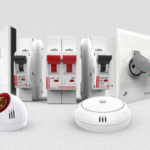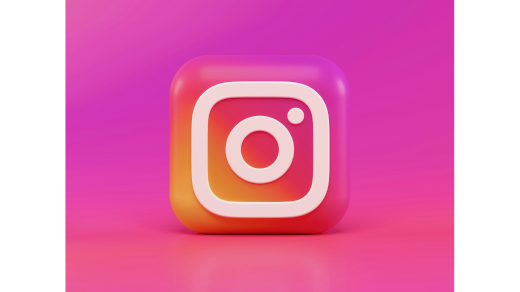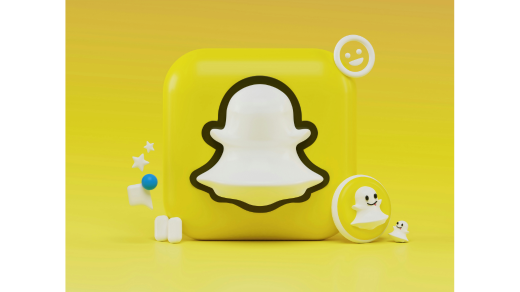1. What are wearable tech devices?
Wearable tech devices are electronic gadgets designed to be worn on the body, such as smartwatches, fitness trackers, smart glasses, and health monitors. These devices connect to smartphones or other systems to track personal data, provide notifications, and enhance daily activities.
2. What are the newest trends in wearable tech for 2024?
By 2024, the latest emerging wearables in trend include:
Advance health monitoring glucose monitoring and BP tracking
Glasses for wearing augmented reality-a completely immersive way of seeing life
Increased longer battery life-charging fast times
AI on board, creating personal health insight
Fashion is now in styles
3. What are health metrics wearable technologies can track?
Wearables today can trace a host of health metrics- heart rate as well as electrocardiography
Sleep
Blood oxygenation levels, otherwise known as SpO2 levels
Stress and breathing patterns
Body Temperature
Blood glucose (with certain devices)
Steps taken
Calories burned
Types of exercises
4. How do wearables, devices measure and calculate health information accuracy?
Wearable tech devices are usually accurate, but the precision varies with the type of device and the metric being measured. For instance, fitness trackers are very accurate when measuring steps but may not be as precise when monitoring heart rate or blood pressure. However, they are getting better with each new iteration.
5. Can wearable devices replace traditional health monitoring tools?
Wearables can supplement traditional health monitoring equipment, but they may not substitute medical-grade equipment. Wearables provide continuous monitoring and real-time data, while medical professionals depend on more precise and regulated tools for diagnoses and treatment plans.
6. What are the most popular wearable tech devices in 2024?
The most popular wearable tech devices in 2024 include:
Apple Watch Series 9
Fitbit Charge 6
Garmin Forerunner 965
Oura Ring Generation 3
Google Pixel Watch 2
Whoop Strap 4.0
7. What is Oura Ring, and why is it famous?
Oura Ring is a small, light, and non-intrusive wearable device for tracking sleep, activity, heart rate, and other health parameters. Its popularity is attributed to its accuracy, long battery life, and style. It offers users deep insights into their health and wellness.
8. How does a smartwatch differ from a fitness tracker?
Smartwatches, like the Apple Watch, offer a broader range of features, including notifications, messaging, app support, and advanced health tracking. Fitness trackers, like Fitbit, are focused primarily on tracking physical activity, steps, sleep, and heart rate.
9. Are wearable devices waterproof?
Most wearable tech has the capability for being water resistant or waterproof rating of IP68 or 5ATM where the device with these ratings resists water in addition to exposing the device, and even through swimming. Specifications vary, users must check if it is compatible to their preferences.
10. How long may batteries last using wearable tech device?
Different types of devices offer different battery life. Smartwatches usually work for 1 to 2 days on full charge, and fitness trackers usually last up to a week. Devices with high-end sensors or displays may demand more frequent recharging.
11. Can wearables help in monitoring mental health?
Yes, most wearables come with features to track stress, anxiety, and mood. This is achieved through sensors that measure physiological signs like heart rate variability and skin temperature. Some even offer mindfulness exercises to help people manage their mental health.
12. What role does AI play in wearable technology?
AI is the reason behind wearable tech as it will provide the insight of personal behavior based on the data collected by the device. AI can figure out the pattern, predict risks, and advice the action; for example, adjust activity or relaxation techniques.
13. Which types of wearables are designed for elderly care?
Wearables for old age care- These include tools that monitor people’s vital sign, fall and alert the primary caregivers or contacting emergency services such as fall monitoring systems, the health monitoring wearables, which are like watching devices, health monitoring watches for tracking safety for independence.
14. What do smart glasses offer, and what do they use?
Wearable devices like smart glasses from Google Glass or Ray-Ban Stories are wearable tech that allow a user to check information, capture photos, or make calls, among other uses. Some come with AR overlays, showing the digital world directly through the lens.
15. Can wearables track sleep?
Yes, many wearables, including smartwatches and fitness trackers, offer detailed sleep tracking, including sleep stages (light, deep, REM), total sleep duration, and quality. Some wearables provide insights into improving sleep patterns and optimizing rest.
16. What is the difference between ECG and heart rate monitoring on wearables?
ECG or electrocardiogram monitoring, for instance, records the heart’s electrical activity and is said to detect any irregular heartbeat rhythms or AFib.
Heart rate monitoring merely keeps track of heartbeats per minute. Therefore, this one is a bit less detailed but helpful nonetheless in determining health status.
17. Is there an athletic-specific wearables?
Yes, there are smart wearables specifically made for athletes that focus on providing advanced metrics such as VO2 max, lactate threshold, and detailed performance analytics. An example would be the Garmin Fenix series, the Polar Vantage V, and the Whoop Strap, designed for endurance and strength training athletes.
18. Can wearables track nutrition and hydration?
While most wearables do not directly track nutrition or hydration, some can estimate calories burned based on activity levels and track hydration by providing reminders to drink water. Apps and integrations with wearables can help users log meals and monitor nutrition.
19. How do wearables protect user privacy?
Most reputable wearable tech companies implement strong data security measures, including encryption and anonymization, to protect users’ personal health data. Users should check privacy policies and adjust settings to control what data is shared with third parties.
20. Can wearables track menstrual cycles?
Yes, many wearables, including the Apple Watch and Fitbit, have features that allow users to track menstrual cycles, predict ovulation, and monitor related symptoms. This data can be synced with health apps to provide a more holistic view of health.
21. How do wearables help with posture correction?
Such examples would include the ability to wear these devices on one’s back, detecting slouch and gently vibrating until a person keeps the right posture. These have monitoring of one’s spine to align it well and give prompt feedback.
22. What are the future opportunities for wearable technology?
Future prospects of wearable tech include the improvement of augmented reality, better health monitoring, and AI integration to give people wellness insights. Wearables are expected to be more seamless, intuitive, and seamlessly embedded into life, providing new ways to interact with the digital world.
23. Are there any downsides to wearable tech?
Some disadvantages of wearable tech include potential privacy issues, reliance on battery life, and a possibility of wrong health data. There is also the physical discomfort of wearing it for long periods.
24. Can wearables track UV exposure?
Indeed, some wearables such as the Garmin Venu and Fitbit Charge can track UV exposure which, for example, warn you when you have spent enough time under the sun which likely causes sunburn. The gadgets use sensors to measure ultraviolet light exposure throughout the day.
25. What are the most important considerations when selecting a wearable tech product?
When choosing a wearable, consider factors like your primary use case (fitness tracking, health monitoring, smart features), battery life, comfort, and compatibility with your smartphone. Reviews and comparisons can help find the best device suited to your lifestyle and needs.
These FAQs provide insight into the latest wearable tech devices, highlighting their capabilities, trends, and benefits for users across various sectors, from fitness to health monitoring.











